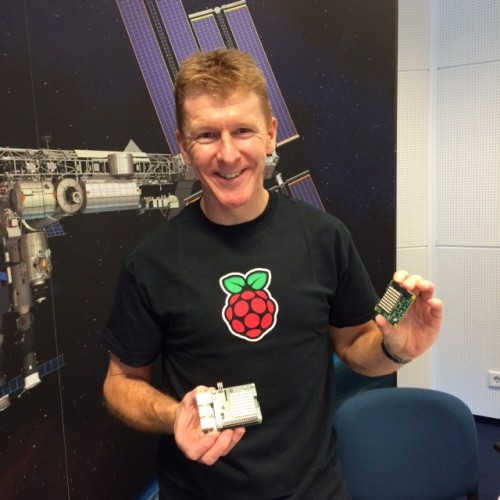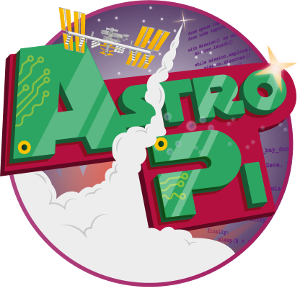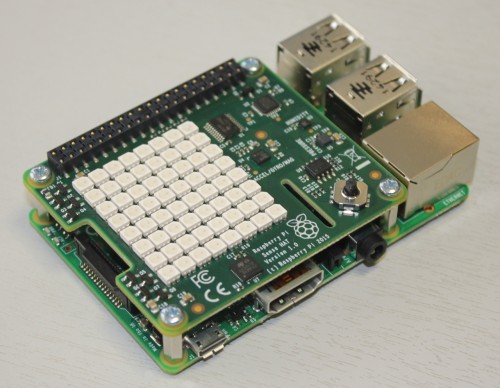|
The first few iterations of any new project are always going to suss out strengths and weaknesses. To this end, Apple has listened to feedback aimed toward their iPads in Education program and is making more than a few changes (at just the right time, when educators are starting to make plans for the next school year beginning in the autumn). Changes to the program are focused primarily on making content easier to download, and devices easier to administer. Having to link downloads to an Apple ID makes sense for devices being used by a single individual or family, but the requirement lead to the creation of generic accounts that offer little security while adding a lot of hassle. Also exciting is news that younger students (below 13 years old) will be eligible for their own Apple IDs in 2016 –which means they will have access to services like iCloud while still paying all due respect to COPPA requirements protecting the online privacy of children in the United States. It may seem like a minor thing (if you will pardon the pun), but providing this type of continuity honors the important role technology now plays in the learning process (one child, one account). Apple’s reveal came from an email delivered to their educational partners, the full text of which reads:
With the presence of iPads in educational environments continuing to improve the test scores of the students using them, making it easier for schools to implement them is never a bad thing.
Apple Gives Overhaul to iPads in Education Offering is a post from: Good e-Reader |
A Semi-automated Technology Roundup Provided by Linebaugh Public Library IT Staff | techblog.linebaugh.org
Friday, March 6, 2015
Apple Gives Overhaul to iPads in Education Offering
Pebble Raises Ridiculous Capital on Kickstarter for Watch Sequel
|
Known by the world as Kickstarter’s darling, the makers of the tremendously popular Pebble smartwatch are hoping for a repeat performance. A little bit ahead of the launch of Apple’s wearable debut, Pebble wanted to raise $500K to produce their new Time Steel product. It appears a few backers have some interest in the new wearable; with 20 more days to raise funds, nearly 66K people had promised Pebble almost $16.7M dollars. There is no question that this is another Kickstarter success story, but it really isn’t a win for the crowdsourcing concept. Many would-be backers have described their Kickstarter experiences as being similar to shopping in an online store. That kind of logic is hard to argue with when Pebble has basically used it as a means by which to offer pre-orders for their latest timepiece. It’s unfortunate if not inevitable. Places like Kickstarter were brought to life so the little guy could bring a great idea to market, even without the capital to do so (funding creativity, as they say). It kind of ruins things when an already well-funded company like Pebble uses it to generate enthusiasm for something they would have released anyway. Their behavior smells opportunistic and is clearly a publicity stunt… which violates the spirit of the site, and is more than a little disappointing. No matter, Pebble is still a worthy contender in the battle for dominance in the wearables market –but that could change after Apple’s next event on March 9, during which we expect to hear a lot more about their highly anticipated watch.
Pebble Raises Ridiculous Capital on Kickstarter for Watch Sequel is a post from: Good e-Reader |
Kobo Aura HD is Officially Discontinued
| Kobo has officially discontinued the Aura HD e-reader which was the first 6.8 inch device the company had ever launched. When this e-reader originally came out it caught Kobo off guard how much consumers loved it. CEO Michael Tamblyn told Good e-Reader that this model accounted for 25% of all hardware sales in 2013. This model has experienced poor retail visibility in the last four months and and it is no longer available anywhere. Kobo has removed the sales button on their main website and all of their global worldwide partners are basically all out of stock. You cannot order them online anymore and you might get lucky in a random bookstore in Europe, but for all sense and purposes this e-reader is gone. The only large screen e-reader that Kobo is actively marketing is the waterproof H2O model that came out in 2014. Kobo Aura HD is Officially Discontinued is a post from: Good e-Reader |
URL: http://goodereader.com/blog/electronic-readers/kobo-aura-hd-is-officially-discontinued
Kobo is Developing Windows Phone 8 e-Reading App
| Kobo has developed a new e-reading app for Windows 8 phones and is actively looking for people to participate in the beta test program. The purpose of this invite only program is to get feedback based on a wide variety of real usage scenarios and essential features that would make the app better. Beta Builds will only be released to the beta participants so you can rest assured that the only difference between betas and the final product would be a bit of polish here and there. If this sounds like something that you're interested in, then please send an email to windowsappfeedback@kobo.com with your email address associated with Microsoft Store so you can download the beta builds. Kobo is Developing Windows Phone 8 e-Reading App is a post from: Good e-Reader |
URL: http://goodereader.com/blog/electronic-readers/kobo-is-developing-windows-phone-8-e-reading-app
Is this the Future of Digital Magazines?
| Magazine publishers are constantly talking about the future of their medium. Will people continue to buy the print edition or gravitate towards digital? Are customers satisfied with a replica edition or do they want something more unique and original? AnOther Magazine has their finger on the pulse and has just released a digital first: a high-definition, moving magazine cover with a bespoke soundtrack. Rihanna's moving image filmed by Inez and Vinoodh is displayed on the digital screen which wraps around 440 pages of fashion, interviews and more. It is important to note that this isn’t an app that the company has developed but they are marketing it as a boxed set that includes a 9 by 12 tablet on the front and a more traditional magazine contained within. There is an audio soundtrack that can be listened to via the 3.55 mm headphone jack. This boxed set is retailing for $125 and was unveiled today at Paris Fashion Week. Is this the future of publishing? I could see special anniversary issues and end of the year best of issues being the most compelling. What if the Time Man of the Year issue had interviews and motion animation displayed on the front cover and people could use as an artistic centerpiece in their homes? The possibilities of technology such as this are endless.
Is this the Future of Digital Magazines? is a post from: Good e-Reader |
URL: http://goodereader.com/blog/digital-publishing/is-this-the-future-of-digital-magazines
Amazon Unveils Comic and Manga Previews in Japan
| Amazon Japan has just unveiled a new function that will allow customers to read free previews of comics and manga. You will be able to send the content to your e-reader, smartphone or tablet. Free Previews have been around for quite sometime in most major markets that Amazon operates in. Japanese readers have only been able to read previews in the Kindle Cloud Reader, which launched in September 2014. Now, anyone using the Kindle App for Android, iOS, Windows and Amazon branded devices can sample something before making a buying decision. Amazon Unveils Comic and Manga Previews in Japan is a post from: Good e-Reader |
URL: http://goodereader.com/blog/e-book-news/amazon-unveils-comic-and-manga-previews-in-japan
Digital News Readership Continues to Gain New Ground
|
According to an article by Erik Sass for MediaPost, there are reports of the “digital audience for U.S. newspapers reaching a record 173 million in January 2015, according to comScore data cited by the Newspaper Association of America. That figure is the highest ever, up 19% from 146 million in January 2014, and 4.8% from 165 million in December 2014. The latest figure represents 82% of the total U.S. adult online population in January 2015. Furthermore, newspapers' digital content reached 91% of U.S. adult women ages 25-34, and the same proportion of U.S. adult men ages 35-44.” Interestingly, there was a sharp increase reported in the numbers of readers who limit themselves not only to digital consumption, but also to utilizing only mobile devices for digital newspaper reading. That fact should speak volumes to publishers and providers alike. Publishers need to ensure that their content, especially their all-important advertising content, lends itself to mobile reading. Digital content providers like subscription providers or other sources such as libraries and the hospitality industry need to ensure a seamless experience for people who plan to read on the small screen. More importantly, the data revealed crucial information about exactly who is reading on their mobile devices, which should give publishers and advertisers the leg up in providing targeted content that speaks to readers. “Within the mobile-only group, the fastest growth in proportional terms came among young women ages 18-24, as this subset soared 155% from 3.2 million to 8.2 million over this period. Not far behind were men ages 34-44, with the number of mobile users in this demo up 122%.” There’s one final piece of information that publishers and providers must understand about the way digital newspapers are currently consumed. Last year, digital advertising revenue accounted for just over $3 billion, or roughly 14% of total newspaper ad revenue; at the same time, digital subscriptions through both stand-alone apps and service apps like Pressreader accounted for almost $11 billion, meaning the money is coming from the readers, not the advertisers. Digital News Readership Continues to Gain New Ground is a post from: Good e-Reader |
URL: http://goodereader.com/blog/digital-publishing/digital-news-readership-continues-to-gain-new-ground
Crunchyroll Adds Kite and Godzilla vs Megalon to it’s Rosters!
| Crunchyroll, the popular media distribution for anime and manga, has announced on Thursday that it has added two new old school favourites to it’s rosters! Kite (OVA originally released in 1999) and Godzilla vs. Megalon (1973) are up and ready to be viewed either in the English dub or subtitled format! Premium Crunchyroll users can immediately view these classics in the US and in Canada, though free users will have to wait patiently till April 5th (Though it’s never a bad thing to start up that subscription anyways!) Released in 1972, Godzilla vs Megalon, has to be one of the most aggressively funny Japanese Monster movie ever made! If you’re ever feeling down, definitely give this movie a go if you haven’t seen it! Crunchyroll’s description: While we have our inner five year olds screaming in delight for Godzilla vs Megalon, Kite (OVA released in 1999) is on a whole different level. There have been a few sequels as well a Live Action take on it (Which I would encourage to check out, because how could you not watch anything with Samuel L. Jackson in it!), but still nothing can top the original high style and fantastic action scenes. And if any of you are wondering, the Crunchyroll version that is being streamed is of streaming equivalence to Media Blasters Kite Remastered release, which made it’s debut on Blu-ray in 2013. Crunchyroll’s description: Crunchyroll Adds Kite and Godzilla vs Megalon to it’s Rosters! is a post from: Good e-Reader |
By Librarians, For Librarians… and cats.
 It's no secret that OverDrive loves librarians. Librarians are information superheros. To quote Judy Blume, "Librarians save lives…" In celebration of librarians, our own punk-rockbook jockeys banded together to compile a list of titles for librarians (and their cats) to enjoy. Crafting with Cat Hair by Kaori Tsutaya – Crafts and cats go together like books and tea. Liven up your #MakerMonday with an adorable finger puppet or picture frame forged from feline fur. Real Murders by Charlaine Harris – Aurora Teagarden is my favorite fictional librarian. She will inspire you to become an amateur sleuth. Tequila Mockingbird by Tim Federle – After a long day at the library, unwind with a literary cocktail. Bridget Jones's Daiquiri is particularly delicious. This Book is Overdue by Marilyn Johnson – Lend this title to every person who asks, "Why do we need librarians when Google exists?". The World's Strongest Librarian by Josh Hanagarne – A memoir about your average Tourette's-afflicted, weight-lifting librarian. Click here to view these titles and more in Marketplace. Title availability may vary based on platform or region. Michelle Ross is a Collection Development Analyst at OverDrive. She aspires to one day use her librarian skills to solve crime. |
URL: http://feedproxy.google.com/~r/OverdrivesDigitalLibraryBlog/~3/0C_KPzV5LkQ/
Astro Pi: Flight Hardware Tech Specs
| Stop! Before you read anything please watch NASA astronaut Reid Wiseman giving us a quick fly-through of the ISS. In the video you see various computers and screens on the walls and it’s crazy to think that two Raspberry Pis will soon be there alongside them. Even crazier to think that you can get your code running on them! What would you make them do? A space tamagotchi perhaps?! So let’s have a look at the flight hardware shall we? …and here is a picture of everyone’s favourite spaceman, British ESA astronaut Tim Peake, taking a short break from his training to check it out for himself.  Image courtesy of ESA Tim is going to get a rather awesome (and expensive) space grade aluminium case with heat dissipation fins, Velcro strips and support arm attachments for his Astro Pi. No you cannot buy this case, trust me it will be prohibitively expensive! What you’ll get is what you see in the pictures above. It will either be free as a reward for submitting a good primary or secondary school idea by the 3rd of April or, if you buy one, around £30 + delivery. There will be another announcement when they are on sale. Below is a summary of the Astro Pi software and hardware. If you have any questions please comment below. We’re all standing by to answer you! Python API
Note: The data sheet links below are only for those of you who really want that information, most humans don’t need to look at them at all! I²C Sensors
Inputs
Outputs
Micro controller
For more information on the Astro Pi: Your Code in Space competition please visit astro-pi.org and click on How to Enter in the toolbar at the top. |
No Tax Break on eBooks in the EU
|
The humor is that tax law is not only good for kindling, it’s plentiful because it could fill the first floor of a library with its droning minutia. It also changes each year, and the surprising results of those changes have left more than one consumer irritated. Just ask anyone in the US who filed this year and had to provide proof of health insurance or risk facing a $500 fine. But that’s nothing compared to the head-scratching that the EU’s highest court has caused when they upheld the ruling this week that ebooks were not books, and therefore would be taxed at a higher VAT rate than their print counterparts. How much higher? As much as 20%, where print books are more typically in the 3% to 6% range. Two countries, France and Luxembourg (who, coincidentally, have strong agreements and corporate locations with Amazon) have been skirting the ruling for quite some time, and have actually been sued by the EU for only collecting the lower VAT rate on ebooks. Those governments have been eating the rest of the tax cost, leading some to accuse Amazon of paying hefty incentives to the governments to offset that burden. Fortunately, this is an issue that may not be over. The reason the court gave for calling ebooks a separate product than a book (and therefore subjected to a different tax rate) is that a separate device must be used and presumably purchased in order to read the ebook. That statement threw the door wide open to punish the film and music industries, since their end products also require some other forms of technology to use them. By that logic, anything could fall suspect: sure, you can eat an apple straight from the tree, but flour must be mixed with other ingredients and then cooked on another implement. Will there be separate taxes on different types of products within the same category, and will consumers have to prove how they actually consume the product in order to avoid the additional taxes? That is obviously a fairly ridiculous example for the purposes of illustrating where industry watchers already fear this precedent could lead, but what is clear is that the tax structure surrounding the entire book industry has been called into question in Europe for some time, largely with the advent of corporations like Amazon having one set of rules, and local booksellers being subjected to another.
No Tax Break on eBooks in the EU is a post from: Good e-Reader |
URL: http://goodereader.com/blog/e-book-news/no-tax-break-on-ebooks-in-the-eu












